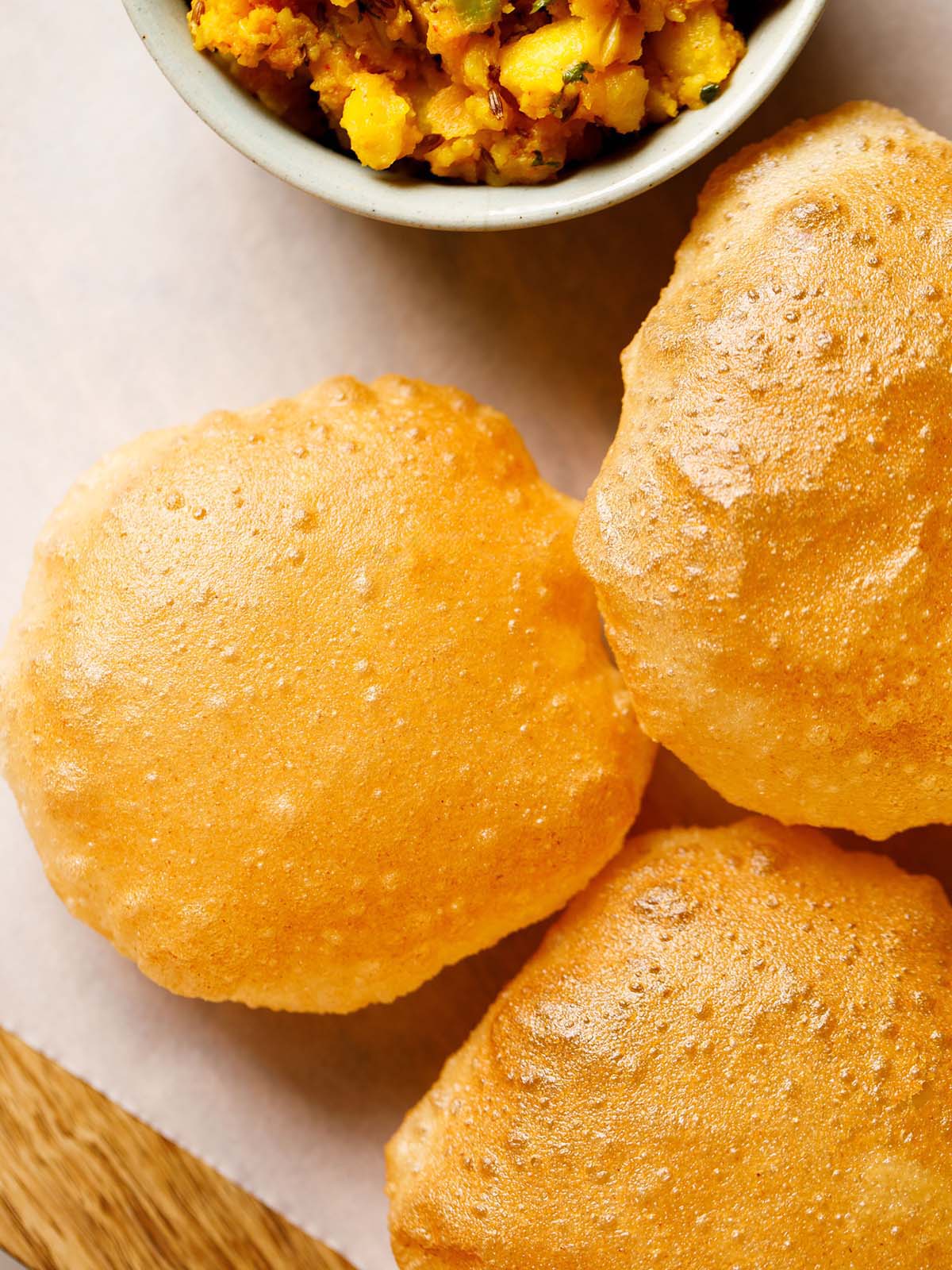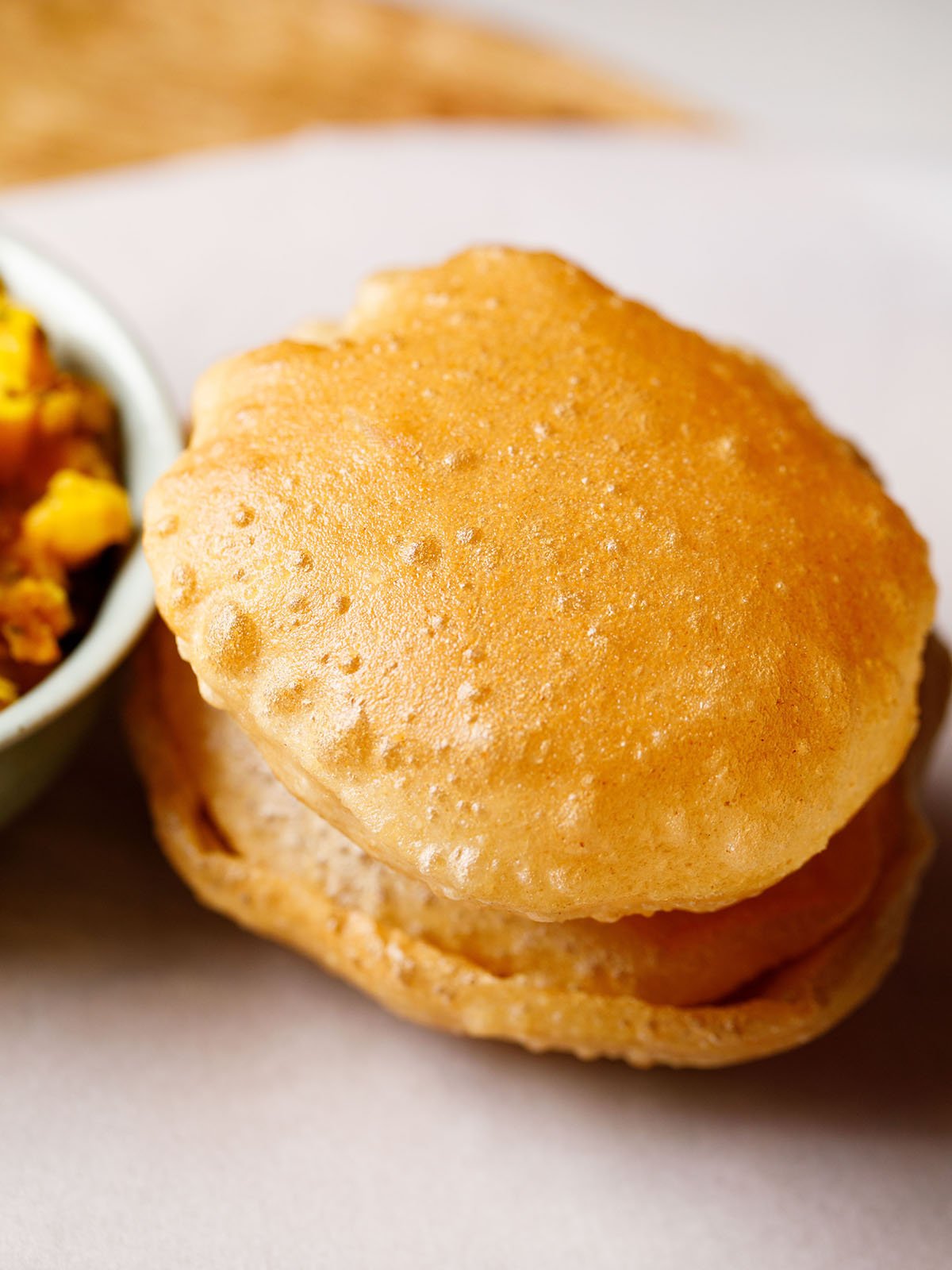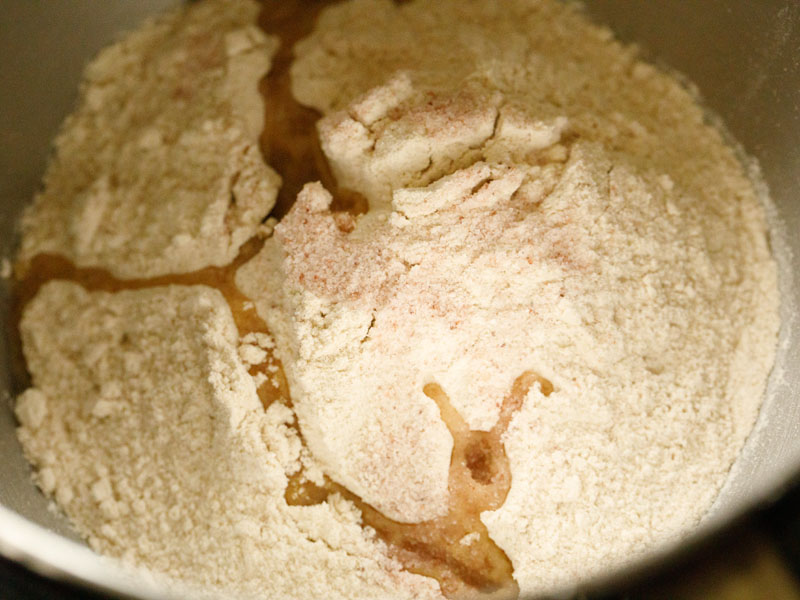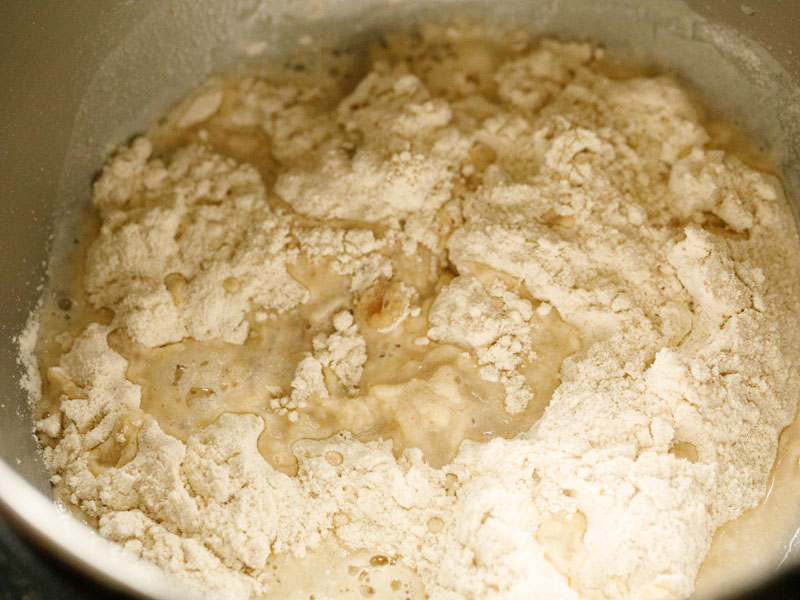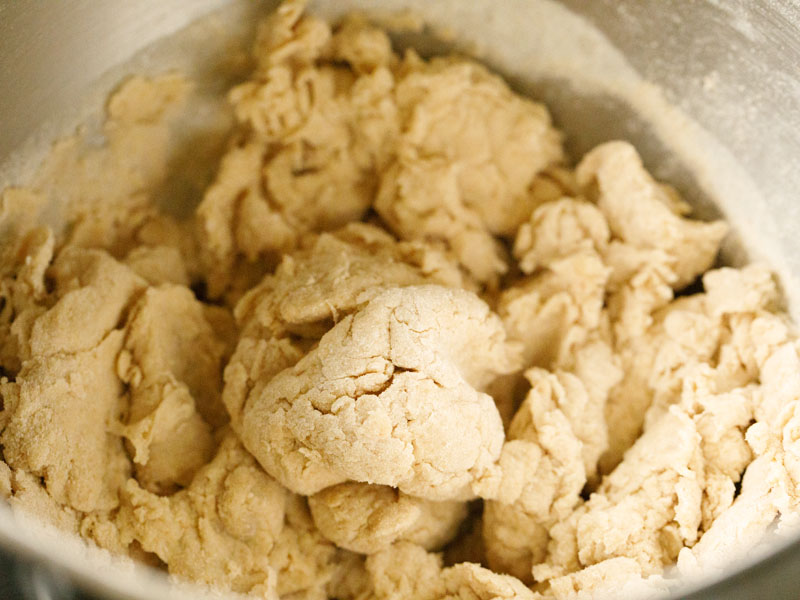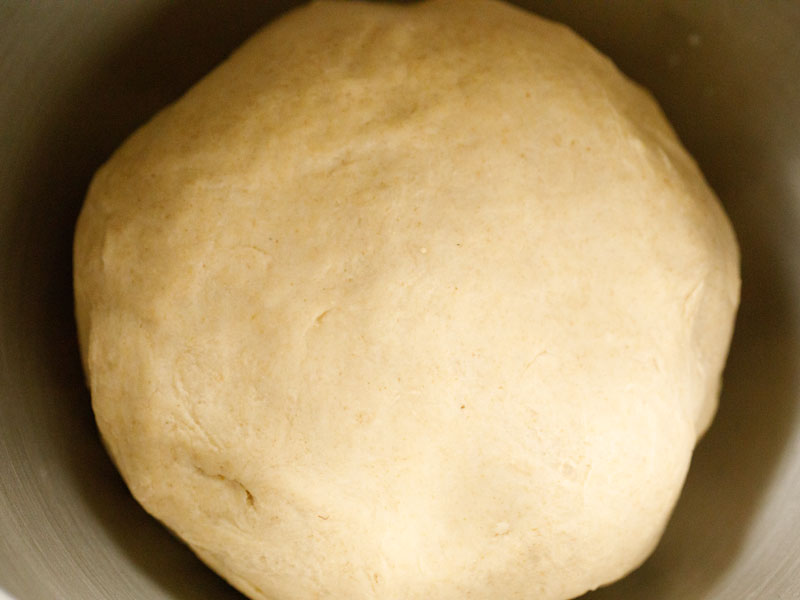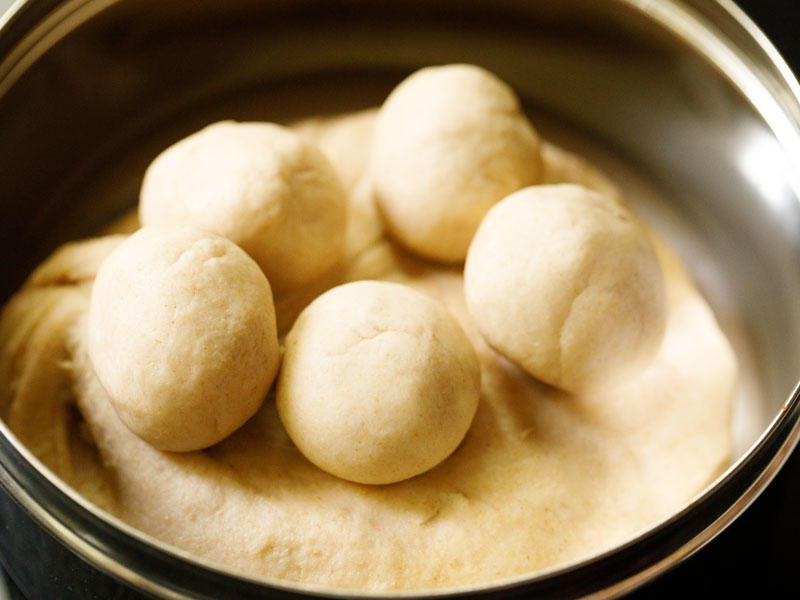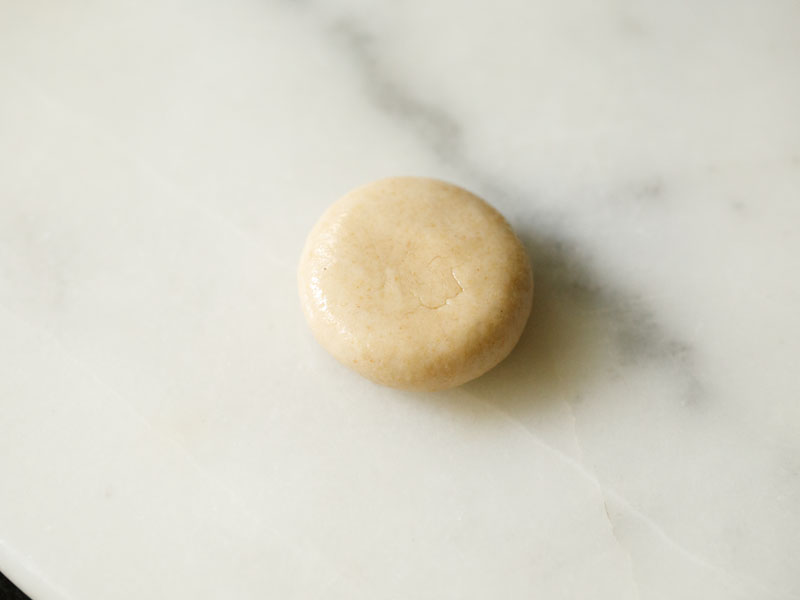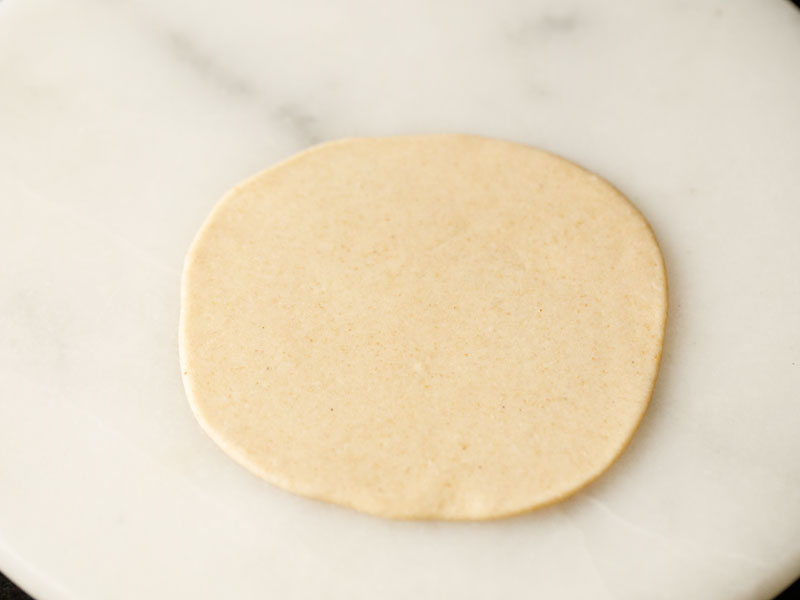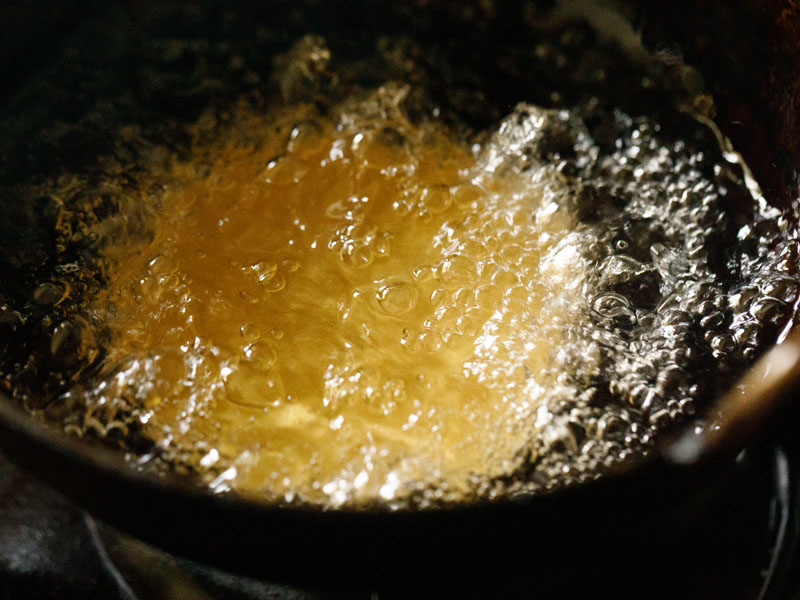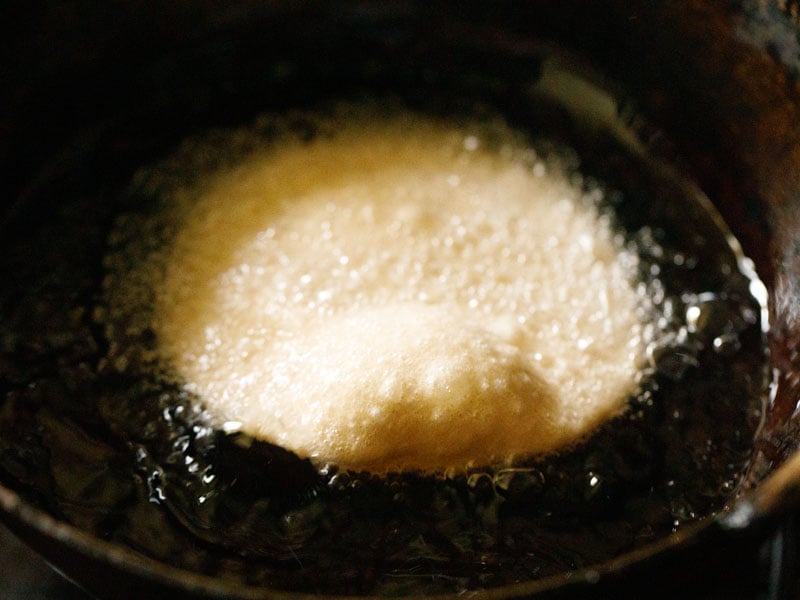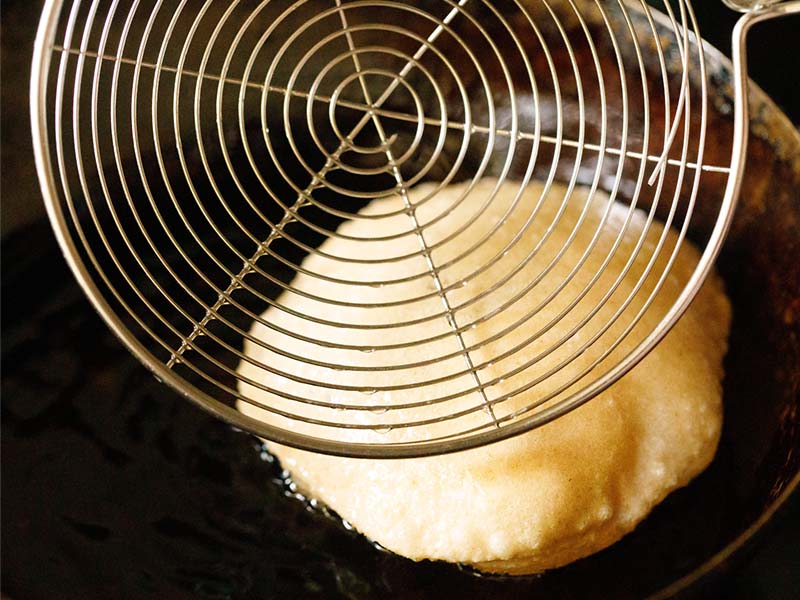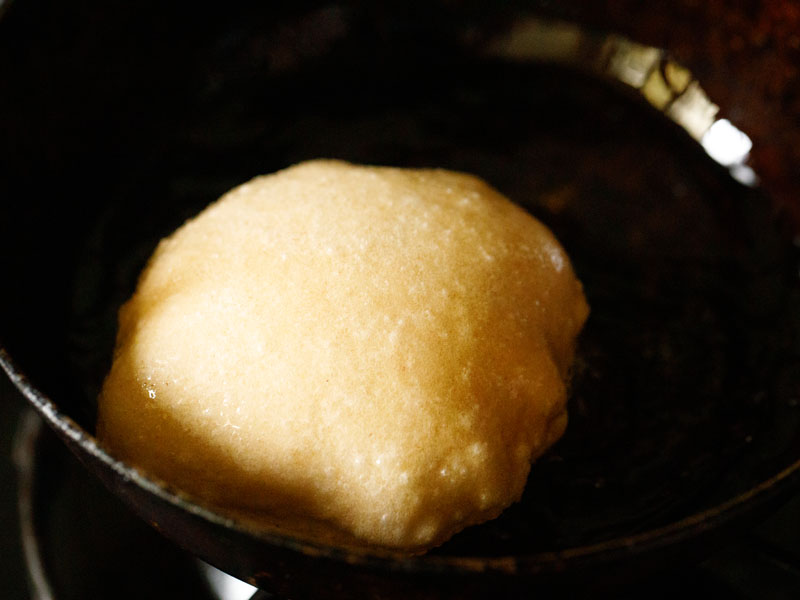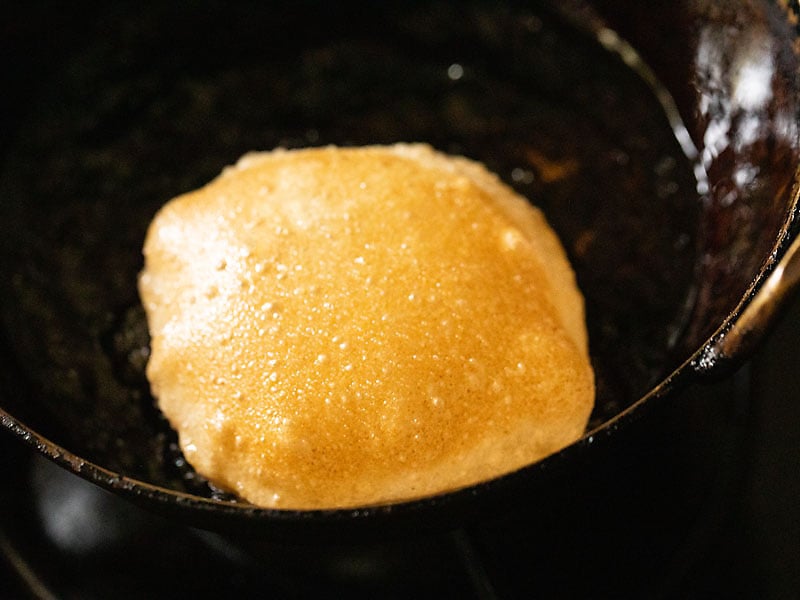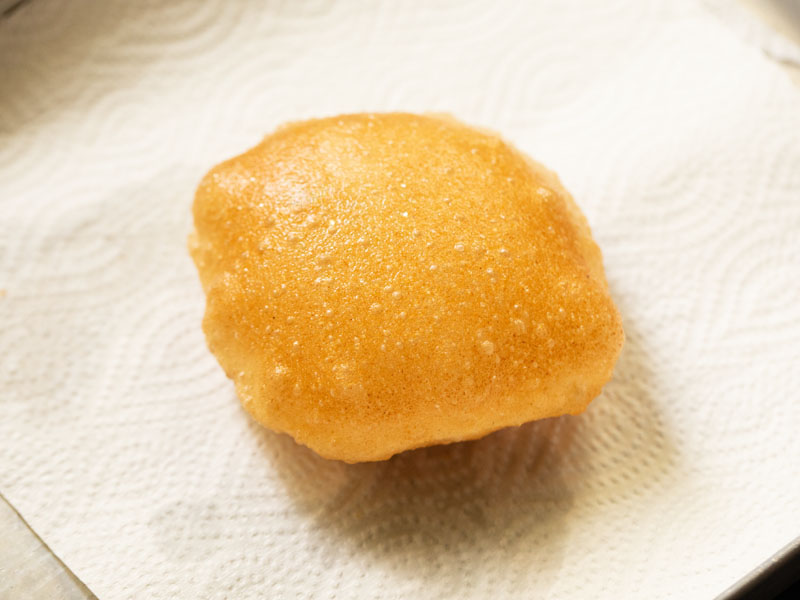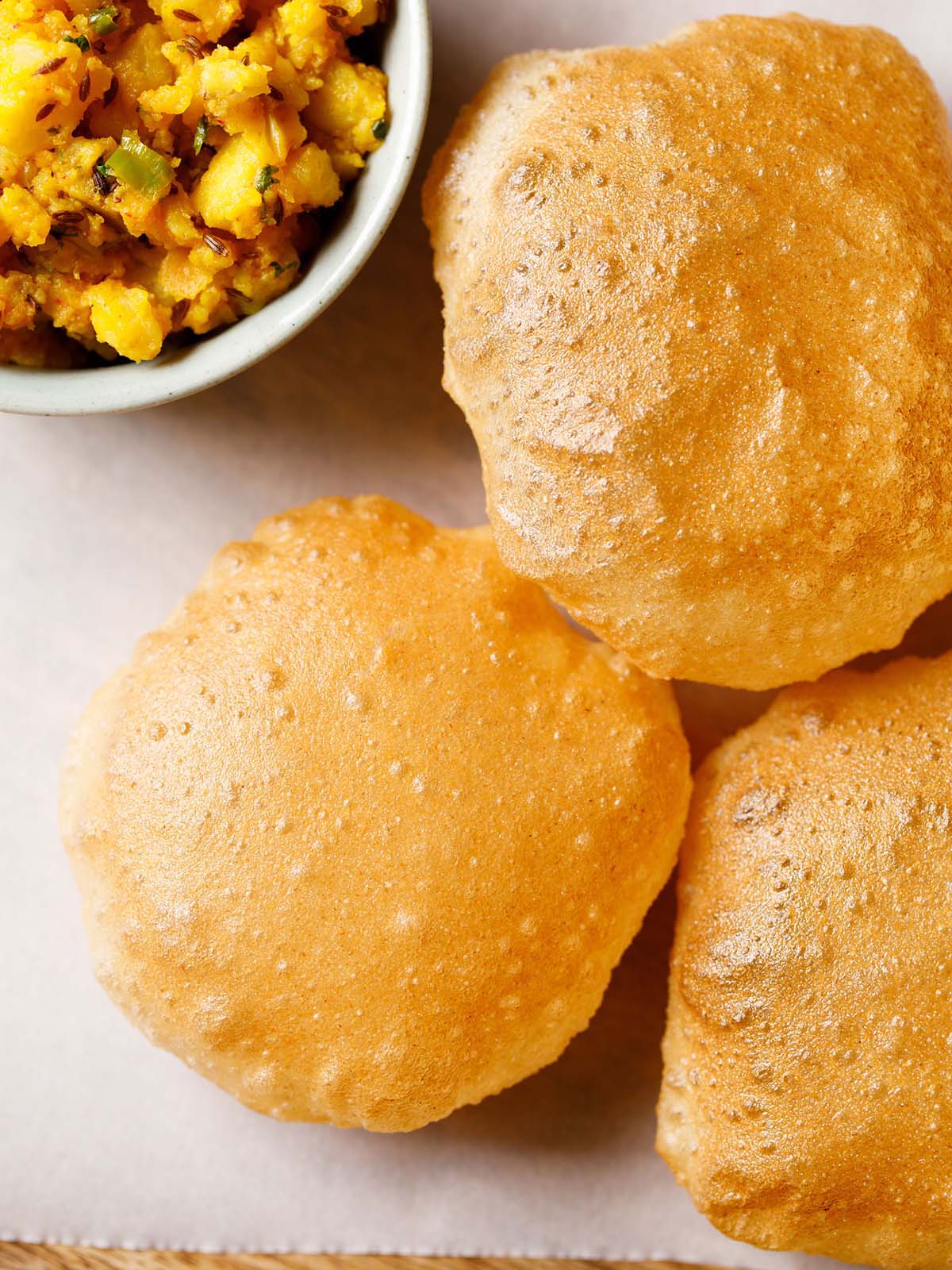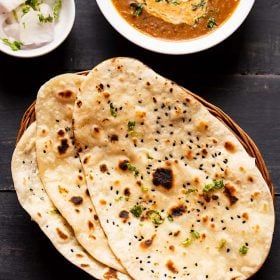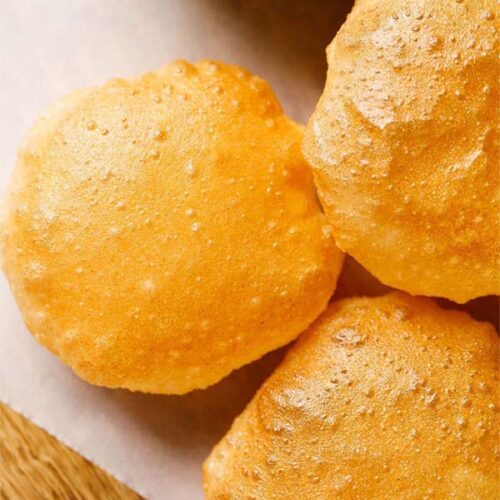What is Poori
A basic poori recipe is made with whole wheat flour, salt, and water. These are only three ingredients you need. A bit of oil or ghee can be added to the whole wheat dough optionally. The dough is not leavened or fermented, so it’s a wonderfully quick and easy bread to make. Small balls of dough are rolled and flattened, and quickly fried in hot oil. The poori puffs up to create light, crispy pillows that just beg to be bitten into. Inside is soft and tender, and perfect for using to scoop up a hearty curry. Make a batch of this poori recipe for a snack now or for your dinner tonight, then have leftovers with breakfast in the morning. There is never a wrong time to enjoy soft and crispy poori! I am sure with my plenty of troubleshooting tips you will be able to make the best crispy, soft and fluffy poori.
How to Make Poori
Homemade puri only takes about 40 minutes to make from start to finish. Be sure to read the entire poori recipe, including my tips for the best puri below before you get started!
Make The Dough
- First, mix together 3 cups whole wheat flour (360 grams), 1 teaspoon salt, and 1 teaspoon oil (optional) in a large bowl. For more crispy puri, you can add ¼ cup fine rava (sooji or semolina).
- Add just a bit of water at a time as you begin to form the dough, making sure to not oversaturate the mixture.
- Knead the dough with a wooden spoon or your hands, or use a standing mixer. Again, add only a splash or two of water at a time as you work.
- Continue to knead until you form a stiff, tight dough. It should not be soft like a roti or a bread loaf. You can add about ¾ to 1 cup of water in total. Cover the bowl with a kitchen towel or plastic wrap, and let the dough rest for 20 to 30 minutes at room temperature.
Form Poori
- When ready to use, divide the dough into about 30 small or 25 medium pieces, and roll each into a tight ball.
- Next, use the palm of your hand to lightly flatten the dough ball, and then apply a bit of oil to the entire surface. This helps the bread fry evenly and rise properly, without the need to dust with flour first (which runs the risk of creating burnt flour particles in your oil).
- Use a rolling pin to roll the poori dough evenly into circles that aren’t too thick or too thin. Ideally, you want them to be about ¼ inch thick.
- Then place the rolled poori on a plate, and loosely cover with a clean kitchen towel so that they don’t dry out.
Deep Fry
While it is easy to fry puri at home, it does take a gentle touch. Because they need to puff up you should be extra careful not to crack them, otherwise oil will seep into the dough as it cooks and get soggy. Follow these simple steps for making sure you fry perfect puri every time: 9. First, heat oil in a deep pan (kadai). Test the oil by dropping a small dough ball into oil. If it rises quickly to the top, then the oil is hot enough for frying. Once you have the oil to the right temperature, carefully add one puri at a time. 10. It should begin to puff up almost immediately after it hits the hot oil. 11. Give it a nudge with a slotted spoon or spider spoon to keep the puri moving and therefore cooking evenly. 12. Gently press and nudge the puri on the sides with a slotted spoon or spider spoon to help it puff up completely. 13. Continue to fry for just a minute or two, until the oil stops bubbling and the bottom of the puri is golden to your liking. 14. Next, turn over the poori and gently press down with the slotted spoon as it fries for a few more seconds. This will ensure that there’s a lovely brown color on all sides. 15. Then transfer the fried puri to a plate lined with paper towels to absorb any excess oil. Fry the remaining poori this way, lowering or increasing the oil temperature as needed to maintain the right level of heat. Very hot oil will darken the color or there may be uneven color patches on the puri.
Enjoy Homemade Poori
- Serve poori hot with any number of sweet or savory dishes, as I have mentioned below. Or enjoy by themselves for a tasty snack! To keep puri soft for a few hours, stack them in a steel container, sealing with a lid at room temperature. They will remain soft and won’t become dense and chewy. Leftovers can be stored in closed container at room temperature for up to 1 day. Because they will lose their crispy exterior, I suggest to rewarm you either bake for just a few minutes in the oven.
Serving Suggestions
Poori is a common side in Indian cuisine and is typically served with a dry or curried potato dish. Crispy fried poori and this saucy, bright Potato Curry are a perfect combination! Together they make a wonderfully comforting and delicious meal that happens to be vegetarian and vegan-friendly. Not only do puri go well with savory dishes, they can be paired with sweet breakfasts and desserts. Sooji Halwa is a breakfast staple that is sweetened with sugar. A seasonal Indian favorite is Aamras (mango pulp) that tastes so good with puri. A great dessert to enjoy with fried poori is Shrikhand, made with greek yogurt/hung curd and flavored with saffron and cardamom. They also can be quickly made as a side for a filling lunch along with curry leftovers and/or a simple sautéed veggie dish (sabzi).
Recipes that pair well with Poori
Poori Variations
There are so many fantastic versions of poori breads, here are just a few for you try:
Masaledar Poori – Spiced puri recipe which is also known as Teekhi Poori. Luchi – In the Bengal region, a popular variation of poori recipe with all-purpose flour (maida) is made and usually served with Bengali Dum Aloo. Mangalore Buns – Sweet banana poori. Palak Puri – With palak puree added to the dough making for a green-colored puri. Beetroot Poori – With Beetroot puree added to the dough giving a vibrant crimson red color poori. Rice Puri – Soft puri made with rice flour makes for a good gluten-free puri recipe. Potato puri recipe – Poori stuffed or mixed with spiced mashed potatoes. Sweet poori recipe – Made with sugar or jaggery are also known as Meethi puri. Vegetable Poori – Variant of poori made with grated vegetables or pureed vegetables.
Ways to test oil for frying
For deep frying, the temperature of the oil should be 180 degrees to 190 degrees Celsius (360 degrees to 375 degrees Fahrenheit) and you can easily measure it with a deep fry or candy thermometer. If you do not have a thermometer, you can check the temperature using these following three methods:
Expert Tips
Dough texture: Make sure your dough is nice and tight because a soft dough will not hold its shape as well when frying. Add a sprinkle of flour to the dough while kneading if you notice it feeling too squishy and loose. Rolling: Along with adding a bit of oil to the flattened dough ball, you can lightly grease the rolling pin with oil to help keep it from sticking to the dough. Again, you don’t want to dust with flour because these particles will burn in the hot oil. Frying: It is very important that the oil is exactly at the right temperature. If the oil is too hot the poori will burn. However, if the oil is cold they will become soggy during the cooking process. Frying oil should be between 360-375 degrees Fahrenheit, or 180-190 degrees Celsius. The poori should puff while frying. If not, then something has gone wrong. Either the dough has not been kneaded well, the poori has not been rolled out evenly, or the oil is not hot enough. Digestion: Fried food have you feeling a bit heavy? Add ajwain seeds (carom seeds) to the flour before kneading! Carom seeds (ajwain) are very helpful in digestion, and add a lovely light flavor to the puri. Crispy texture: For a crispier poori, you can add ¼ cup fine suji (rava or semolina flour) to the dough.
Please be sure to rate the recipe in the recipe card or leave a comment below if you have made it. For more vegetarian inspirations, Sign Up for my emails or follow me on Instagram, Youtube, Facebook, Pinterest or Twitter. Naan Recipe | Easy No Yeast Soft Naan Bread Kulcha Recipe | Kulcha Bread Thepla | Gujarati Methi Thepla Recipe Bhatura Recipe | Naturally Fermented & Instant Bhature This Poori recipe from the archives first published in April 2014 and has been updated and republished on December 2020.
